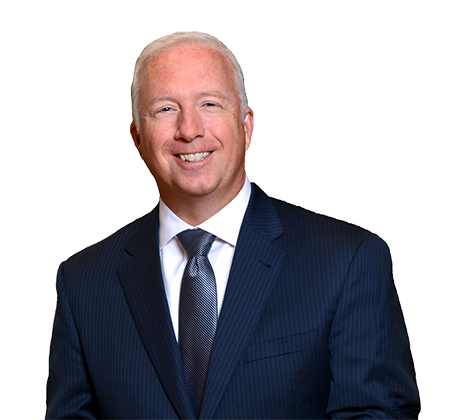Discussion of improved supervision for insurance groups, the role of navigators under the Patient Protection and Affordable Care Act (PPACA), and the announcement of Terri Vaughan's resignation as CEO of the National Association of Insurance Commissioners (NAIC) were among the buzz at the Summer National Meeting of the NAIC in Atlanta, Georgia from August 11-14, 2012. There was also plenty of discussion and committee work on the usual matters, such as the Own Risk and Solvency Assessment (ORSA) Model Act, principle-based reserving for life insurers, and reduced collateral requirements for certified reinsurers.
However, for those looking ahead to determine areas of regulatory review and potential oversight that may be on the horizon, there were some noteworthy matters brought to the attention of regulators that are likely to be the subject of future NAIC discussion. All of these matters noted below have garnished enough attention from regulators to merit further study or consideration. Insurers and reinsurers may be interested to track these issues as they are addressed at upcoming meetings.
New Subgroup to Vet Accounting and Reporting of Quota Share Reinsurance Agreements
There appears to be some renewed apprehension among regulators that certain quota share reinsurance agreements are not in fact transferring significant risk and serve instead as financing transactions through the use of loss corridors, sliding scale commissions, and loss ratio caps. The Financial Analysis (E) Working Group has referred the matter to the Reinsurance (E) Task Force.
In a nutshell, the concern is that insurance companies are entering into reinsurance agreements identified as quota shares that in actuality expose the reinsurer to minimal risk. A quota share reinsurance agreement in its purest form is a proportional treaty whereby a reinsurer assumes a given percentage of losses and premium. The arrangement, as with all reinsurance transactions, must be such that the reinsurer has assumed "significant insurance risk under the reinsured portions of the underlying insurance contracts" and may "realize a significant loss from the transaction." See Statement of Financial Accounting Standards (FAS) No. 113. However, when these arrangements include provisions such as loss corridors providing that the ceding company reassume a portion of the reinsurer's liability in the event the loss ratio exceeds a certain amount, they may considerably reduce a reinsurer's risk.
On August 13, 2012, the Task Force moved to establish a subgroup to consider and implement the following recommendations of the Working Group:
• A review of accounting and reporting formats to best highlight the issue, including the possibility for a blanks enhancement to better capture the impact and conditions of a quota share reinsurance agreement in the annual and quarterly financial statement filings. This would make it difficult for insurers to account for quota share arrangements with minimal risk transfer in the usual course;
• Providing additional guidance on the review of quota share reinsurance agreements in the NAIC Financial Analysis Handbook. This would likely mean the addition of probing and specific inquiries relating to the assessment of quota share arrangements.
We will be monitoring the work of this subgroup.
Lender Placed Insurance on the Hot Seat
Two days prior to the start of the Summer National Meeting, the NAIC held a public hearing on lender placed insurance (LPI). LPI, also known as creditor-placed insurance or force-placed insurance, refers to insurance obtained by a lender, such as a bank or mortgage servicer, on behalf of a borrower to protect that lender's collateral in instances where the borrower let a policy lapse or become cancelled or if the lender deems the borrower's insurance insufficient.
The impetus for the hearing was a concern brought to the attention of regulators that rates charged for LPI are higher than rates for property insurance the borrower could have otherwise purchased on his or her own. In addition, the LPI policy often has limited coverage, e.g., excludes coverage for personal items or owner liability. Regulators are troubled with what they perceive as "reverse competition." In some instances, the lender may be charged a higher rate because of commissions and fees paid for the services of agents, brokers, finance companies, and other entities assisting in the process. Consumers groups allege that lenders may be motivated to select coverage from an insurer looking out for the lender's interest rather than that of the borrower. Bottom line, general competitive forces that tend to drive down costs of insurance for consumers may be absent in the case of LPI products since the lender has little motivation to select the lowest price for the coverage, which is borne by the borrower.
Consumer groups and industry representatives testified at the hearing and discussed the processes utilized to place LPI policies, pricing, loss ratios, an alleged lack of underwriting, and coverage provided by such policies.
Mississippi Commissioner Mike Chaney, Chair of the Property and Casualty Insurance (C) Committee, suggested having the Committee review the Creditor-Placed Insurance Model Act, which has been adopted by only a few states, consider the hearing testimony, and convert the Model Act into a guideline that includes appropriate consumer safeguards, if deemed necessary. The Committee voted unanimously in favor of Commissioner Chaney's recommendation.
Computerized Claims Systems Under Scrutiny
Those companies selling computerized claims-adjustment systems (for use by insurance companies, third party administrators, etc.) may become the subject of NAIC regulators' inquiry as to how these systems function. Indiana Insurance Commissioner Stephen Robertson, Vice Chair of the Market Regulation and Consumer Affairs (D) Committee, brought to the Committee's attention a letter sent by the Consumer Federation of America (CFA) urging the investigation of computerized claims-adjustment systems. The concern is that such systems may be easily manipulated to potentially undervalue a loss and claim payout. The CFA recommends that state insurance departments take a number of steps including (i) regulating companies that sell claims-adjustment software products, (ii) examining and monitoring the use of such systems by leading insurance companies, and (iii) notifying consumers in writing when such systems have been utilized or relied upon to process their claims and providing consumers with a copy of reports generated by said systems.
Amy Bach, a representative from public advocacy group United Policyholders, commented that adjusters often rely primarily on such programs for auto insurance and homeowners claims, resulting in a purported undervaluing of such claims by the insurer. Bach recommended that the Committee sponsor a public hearing and request that representatives of the various computerized claims system vendors attend to explain their products.
Vermont Deputy Insurance Commissioner Susan Donegan echoed the need for a public hearing on the issue and stated that Vermont has authority to regulate claims-handling procedures, including vendors of computerized claims systems, to the extent they impact Vermont consumers.
This is likely to be an interesting issue to track for insurers that are utilizing some form of an automated claims system to settle claims. While it will be the vendors of such software that are likely to feel the grunt of regulators' inquiries into their valuation factors and processes, regulators' actions, if any, will impact those insurers currently relying on such software.
The Effect of PPACA on Medical Malpractice
Upon the request of New Mexico Superintendent John Franchini, the Property and Casualty Insurance (C) Committee moved to study the impact of the Patient Protection and Affordable Care Act on medical malpractice insurance. Superintendent Franchini commented that the Act is changing the practice of medicine, which may impact medical malpractice insurers and the rates charged to insure medical providers. The Committee is likely to create a subcommittee to commission and oversee the study sought. Those carriers writing medical malpractice insurance will want to monitor the work and conclusions of this subcommittee.





